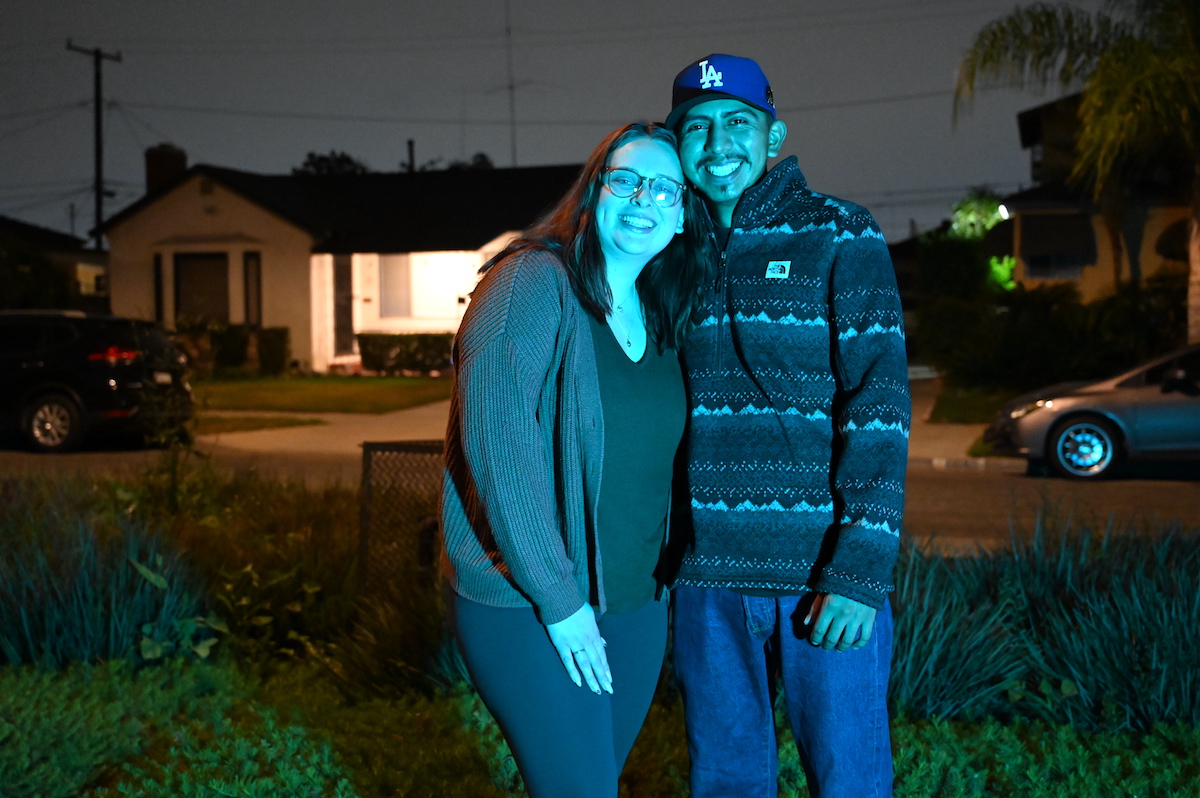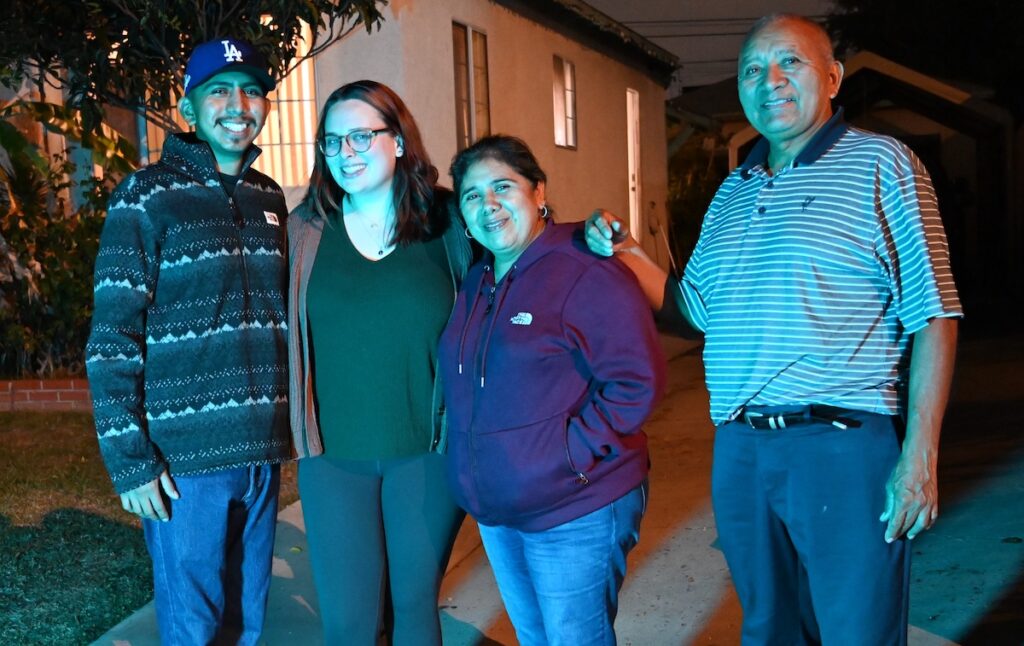By Myriam Reyes | Impulso
Edgar Lara, 24 years old, was born in Los Angeles to parents from Oaxaca, Mexico (he considers himself indigenous and Mexican). Despite being a good student and holding down two jobs – one in Arcadia’s Department of Parks, and one for a tech company – he says he has experienced incidents of racial hatred from the age of 16. On several occasions the trigger was being seen in public walking with his white girlfriend Vale Siess, who is 23.
“I met Vale Siess in Arcadia in 2017 when we worked together on an event. We have been dating for four years and four months. I like her personality, she laughs at all my jokes, she is a friend who has always been and is by my side,” he said.
Vale says what she likes most about Edgar is that he is kind, funny and affectionate, always willing to go on an adventure, to see new places, and very considerate of her and her family. She says she now likes Oxacan food more than American food.
“From Oaxaca, I like the mountains, the city and Puerto Escondido, and food like quesadillas, burritos, memelas, and huaraches,” she said.” I love Oaxacan quesillo, and tlayudas. I had never tried mezcal and now I drink that more than tequila. I also like sapote water, pineapple water, cucumber water. My favorite is Jamaica water.”
“People’s relationships are closer in the Oaxacan culture,” Valle adds, “They communicate more than people in my family. There’s always food, it’s more colorful. Weddings are very different with food, live music, drumming, parades. The festivities last much longer.”
Edgar says that Vale’s family parties are “very different, calm, with no band and not much music. Their relatives do not talk much. They are not very social and there are very few children.”
Nevertheless, both Edgar and Vale say her family has been very welcoming of the mixed-race couple. “My color has never been a problem for them,” said Edgar. Vale says her parents have always welcomed other cultures “so when we started dating it wasn’t such a bad thing for them.”
Vale, who has a university degree in child development, says the couple plans to move in together and get married. They would like to have two or three children and also adopt.
Both acknowledged that when they traveled together to Washington state, Utah and Las Vegas, some white people stared at them but said nothing. Vale believes this is due to lack of knowledge of other cultures and races.
“I went to a private school where the majority of students are white. You hear them talk negatively about other people because of the color of their skin, their sexual orientation, or their religion. I actually believed that was correct. But when I was a student at the University (Cal State LA), I realized that racial hatred was not good. I became more active, going to various protests against racial hatred.”
When she started dating Edgar, she became excited about the culture of Oaxaca. When the Disney movie “Coco” was released, she was excited that more people were learning about the place.
Edgar recalled that when he was in high school there were times when African Americans, Whites and even Asians told him to go back to Mexico. He didn’t let it affect him personally. Two years ago, while driving with his girlfriend, two police officers – one white, one Filipino – stopped him because his plates had expired. They flashed their light and spoke loudly to him.
Vale says her greatest fear is that police will stop and detain him simply because he is brown. She says that several times the couple has been stopped and she’s been asked, ‘Is he bothering you?’ Now, when she notices police who are looking at the couple, she moves out in front to ask ‘can I help you with something?’
Jorge Partida heads up the psychology department at the Los Angeles County Department of Mental Health. He says the most powerful weapons to fight racial hatred are love and family.
“What matters is the love between two people and their commitment to communicate effectively, to accept their diversity, to celebrate it. It’s important that each has the space to celebrate and participate in the culture of the other”.
Today, younger generations fight against racism, Partida notes, pointing to the rise in inter-racial couples and bi-racial people seeking county services.
“It’s difficult for our grandparents or parents to accept integration because it implies the birth of children who are biracial or bicultural – who don’t look like the rest of the family.
“Hate incidents and attacks represent the ignorance of people who have no experience seeing integrated or biracial couples.
“We ourselves always have to be aware of our internalized racism. There are times we carry certain prejudices and we need to analyze them. Through self-awareness, we have the ability to defend ourselves against external attacks. We must do it especially for our children for their mental health and their ability to get ahead in the world. Acceptance, tolerance towards those who are different from us, is extremely important to find success.
When children are taught about acceptance and tolerance, when people know the history and culture of each ethnic group or race, fear of the unknown and prejudice are lost.”
This article is part of the Love Across Colorlines series, a collaboration of 20+ ethnic media outlets looking at interracial marriage in California at a time of rising hate. Visit Love Across Colorlines to see more in the series.





